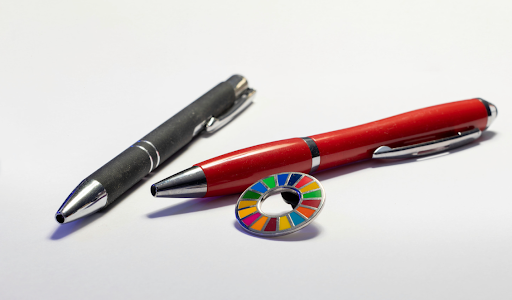Agenda 2030 and the Global Goals – a Plan for a Sustainable Future

Updated at 2025-10-21
Background – from the Millennium Goals to the Global Goals
Before Agenda 2030, the Millennium Development Goals (MDGs) helped drive important progress, but they did not cover the full range of challenges needed for sustainable development. To address this, world leaders at the UN's sustainability conference in Rio de Janeiro 2012 decided to create a more comprehensive agenda—Agenda 2030.
A Collaborative Effort
To ensure that the new goals were both relevant and achievable, they were developed through a broad and inclusive process led by UN member states. This three-year process involved governments, researchers, businesses, and civil society organizations.
This collaboration resulted in goals that were more ambitious and comprehensive than previous development targets. In September 2015, all 193 UN member states unanimously adopted Agenda 2030 and the Global Goals for Sustainable Development.

What do the Global Goals Include?
The 17 Global Goals include 169 specific targets, covering three dimensions of sustainability:
- Economic sustainability – Creating economic growth without harming the environment or increasing inequalities.
- Social sustainability – Ensuring fundamental rights, health, and education for all.
- Environmental sustainability – Protecting our planet by reducing emissions, preserving ecosystems, and using resources responsibly.
The goals are interconnected, meaning that progress in one area often impacts others.
.png)
The 17 Global Goals for Sustainable Development
1. No Poverty
Eradicating extreme poverty and reducing inequalities through social protection systems and economic opportunities for all. This goal also includes strengthening vulnerable groups and increasing their resilience to economic, social, and environmental crises.
2. Zero Hunger
Ending hunger and ensuring everyone has access to safe and nutritious food year-round. This involves supporting sustainable agriculture, improving the livelihoods of small-scale farmers, and reducing food waste along the entire supply chain.
.png)
3. Good Health and Well-being
Ensuring healthy lives and promoting well-being for all ages. This includes reducing maternal and infant mortality, fighting communicable and non-communicable diseases, improving access to healthcare, and minimizing health risks from pollution and hazardous chemicals.
4. Quality Education
Providing inclusive and high-quality education that equips people with knowledge and skills for the future. The goal focuses on ensuring all children complete primary and secondary education and improving lifelong learning opportunities.
5. Gender Equality
Ensuring gender equality and empowering women and girls. This means eliminating discrimination, ending gender-based violence, stopping human trafficking and child marriage, and increasing women’s participation in decision-making and economic activities.
.png)
6. Clean Water and Sanitation
Ensuring access to clean water and proper sanitation for all. This requires reducing water pollution, promoting sustainable water management, improving infrastructure, and addressing water scarcity in vulnerable regions.
7. Affordable and Clean Energy
Ensuring universal access to reliable, sustainable, and affordable energy. This involves increasing renewable energy use, improving energy efficiency, and expanding energy infrastructure, especially in developing countries.
8. Decent Work and Economic Growth
Promoting sustainable economic growth and job opportunities with fair working conditions. This goal includes eliminating forced labor, child labor, and discrimination while fostering innovation and entrepreneurship.
.png)
9. Industry, Innovation, and Infrastructure
Building resilient infrastructure, promoting sustainable industries, and encouraging innovation. This includes investing in technology, research, and sustainable transport and energy systems.
10. Reduced Inequalities
Reducing inequalities within and between countries by expanding economic opportunities for marginalized groups, ensuring equal rights, and fostering social, political, and economic inclusion.
11. Sustainable Cities and Communities
Making cities and communities inclusive, safe, and sustainable. This means better urban planning, access to housing and transportation, reducing environmental impact, and preserving cultural and natural heritage.
.png)
12. Responsible Consumption and Production
Reducing resource consumption and waste through more sustainable production and consumption patterns. This involves using natural resources efficiently, cutting food waste, and ensuring companies take responsibility for their environmental impact.
13. Climate Action
Addressing climate change by reducing emissions, increasing resilience, and integrating climate considerations into policies. This goal also includes raising awareness and education on climate issues.
.png)
14. Life Below Water
Protecting oceans and marine life by reducing pollution, combating overfishing, and preserving marine ecosystems. It also includes measures to reduce ocean acidification.
15. Life on Land
Protecting, restoring, and sustainably managing ecosystems and biodiversity. This includes halting deforestation, preserving biodiversity, and protecting endangered species.
.png)
16. Peace, Justice, and Strong Institutions
Reducing violence, strengthening justice systems, and combating corruption. This goal also includes protecting human rights and reducing crime.
17. Partnerships for the Goals
Emphasizing the importance of international cooperation to achieve the Global Goals. This includes financial support, technological collaboration, and strengthening the capacity of developing countries to implement sustainability measures.
.png)
Who Is responsible for achieving the goals?
Agenda 2030 is not legally binding, but all countries have committed to working toward its success. Governments have the main responsibility, but achieving the goals requires collaboration between businesses, local communities, researchers, and civil society organizations.
Everyone has a role to play in making Agenda 2030 a reality—both individuals and organizations. By making sustainable choices in our daily lives, we can contribute to a future where no one is left behind.
.png)
Related content
Here you can find articles and pages relevant to this subject.